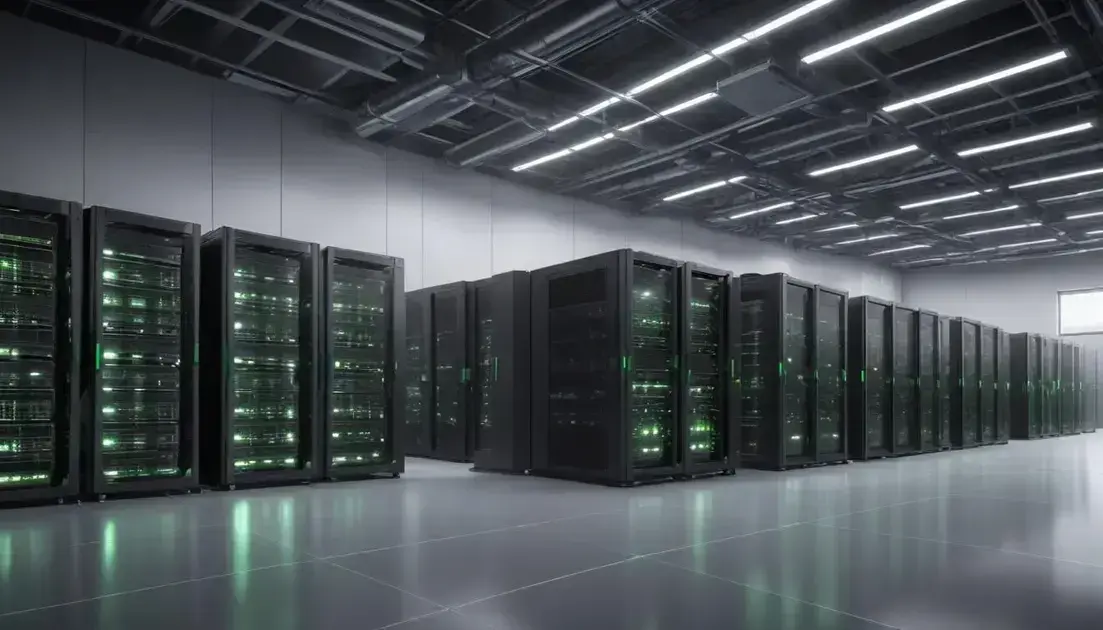Unlocking SustOps: The Future of Data Sustainability
SustOps is a comprehensive approach to integrating sustainability into business operations, leveraging technologies like AI, circular economy principles, and energy management systems to enhance efficiency and reduce environmental impact.
In today’s digital era, SustOps emerges as a critical strategy for businesses striving for energy efficiency and sustainability. Wondering how it reshapes the operational landscape?
Understanding SustOps and Its Importance
SustOps is revolutionizing how businesses approach operational efficiency and environmental responsibility. This strategy integrates sustainability into the core of operational processes, significantly reducing the environmental footprint of data centers.
One of the key components of SustOps is the use of advanced technologies. Cloud computing and virtualization allow companies to maximize resource utilization, thereby lowering energy consumption. By moving workloads to the cloud, organizations can decrease the number of physical servers, resulting in less energy use and cooling requirements.
The adoption of renewable energy sources is another vital aspect of SustOps. Companies are increasingly investing in solar and wind energy to power their data centers, which not only enhances sustainability but also improves their reputation among environmentally-conscious consumers.
Furthermore, implementing effective monitoring and management tools allows for better decision-making regarding energy use. Real-time analytics help track performance and identify areas for improvement, ensuring that sustainability goals are met while maintaining operational efficiency.
Key Technologies for Energy Efficiency
Energy efficiency in data centers hinges on the adoption of several key technologies. Among these, virtualization stands out, enabling multiple virtual servers to operate on a single physical server. This maximizes resource use and significantly reduces energy consumption.
Artificial Intelligence (AI) plays a crucial role as well. AI algorithms analyze performance data to optimize cooling systems, which can account for a substantial portion of a data center’s energy use. By adjusting cooling in real-time, AI helps maintain optimal temperatures while reducing energy waste.
Additionally, blockchain technology contributes to energy efficiency by improving transparency in energy transactions. It allows for better tracking of energy sources and use, fostering accountability in energy management.
Another important tool is the implementation of energy management systems (EMS). These systems continuously monitor energy consumption and provide actionable insights. By leveraging data analytics, organizations can identify inefficiencies and make informed decisions to enhance energy performance.
The Role of AI in Data Sustainability
The integration of Artificial Intelligence (AI) into data sustainability practices represents a significant advancement in how organizations manage their resources. AI technologies facilitate the automation of data collection and analysis, enabling businesses to identify inefficiencies swiftly.
One major application of AI is in predictive analytics. By analyzing historical data, AI can forecast future energy consumption patterns, allowing organizations to optimize their operations and reduce waste. This proactive approach is vital for achieving sustainability goals.
Moreover, AI-driven systems enhance energy management by continuously monitoring usage and suggesting real-time adjustments. This not only prevents energy overuse but also contributes to lower operational costs. Machine learning algorithms can adapt to changing conditions, improving efficiency on an ongoing basis.
Another important aspect is the role of AI in managing renewable energy sources. AI helps integrate various energy inputs, allowing for smarter distribution while ensuring that clean energy is used effectively. This optimization helps organizations meet their sustainability targets while enhancing their overall efficiency.
Creating a Sustainable Ecosystem in Businesses
Building a sustainable ecosystem within businesses requires a multi-faceted approach involving collaboration among various stakeholders. Companies must work closely with suppliers, customers, and employees to foster an environment centered around sustainability.
One effective strategy is to implement circular economy principles. This involves redesigning products and processes to minimize waste and promote recycling. By rethinking the lifecycle of goods, businesses can reduce their ecological footprint while maximizing resource use.
Moreover, organizations can leverage sustainability assessments to evaluate their current practices. These assessments identify areas where improvements can be made, such as energy consumption and waste management. Regular evaluations allow businesses to adapt and innovate continuously.
Engaging employees in sustainability initiatives is crucial. Training programs and awareness campaigns can empower staff to contribute to sustainable practices, fostering a culture of responsibility. When employees feel invested in their company’s sustainability journey, they are more likely to support and drive these initiatives forward.
In Summary: Embracing Sustainable Business Practices
Embracing sustainability is not just an option; it’s a necessity for businesses aiming for long-term success. By integrating eco-friendly practices, companies can enhance their operations and attract environmentally conscious consumers.
Implementing key technologies, such as AI and energy management systems, can greatly increase efficiency while minimizing waste. Additionally, fostering a culture of sustainability among employees and stakeholders ensures that everyone contributes to a greener future.
As organizations invest in creating sustainable ecosystems, they position themselves as leaders in the market. Sustainability not only benefits the planet but also strengthens brand reputation and drives innovation.
Ultimately, the journey towards sustainability is ongoing, and every step counts. Businesses should continuously seek out innovative solutions and strategies to improve their impact on the environment.
Frequently Asked Questions
What is SustOps and why is it important?
SustOps refers to sustainable operations that integrate eco-friendly practices into business processes. It’s important because it helps companies reduce their environmental impact while improving efficiency.
How does AI contribute to energy efficiency in businesses?
AI contributes by analyzing data to optimize energy consumption and manage resources effectively. This leads to reduced waste and lower operating costs.
What technologies are essential for creating a sustainable ecosystem?
Key technologies include energy management systems, virtualization, and renewable energy sources, all of which help businesses operate more sustainably.
How can employees be engaged in sustainability initiatives?
Employees can be engaged through training programs and awareness campaigns that encourage them to participate in sustainability efforts and contribute ideas.
What are the benefits of applying circular economy principles?
Applying circular economy principles minimizes waste, promotes recycling, and enhances resource efficiency, allowing businesses to operate sustainably and innovate.
How can companies measure their sustainability progress?
Companies can use sustainability assessments and performance metrics to track their impact on the environment, identify areas for improvement, and innovate accordingly.






